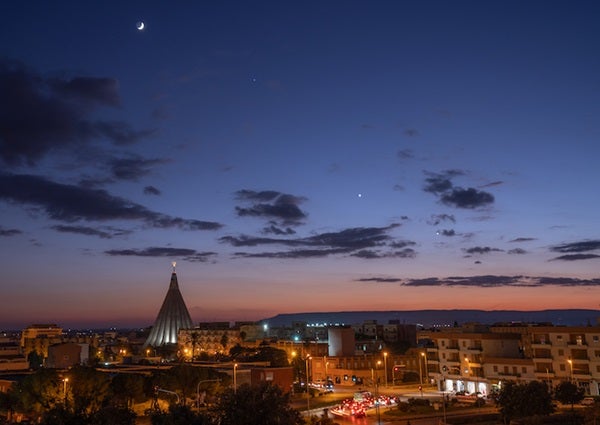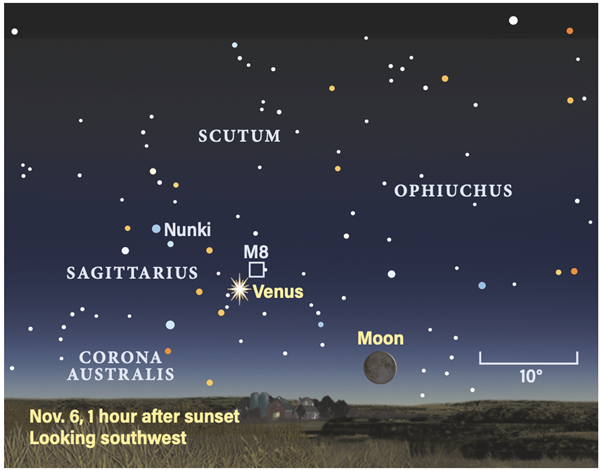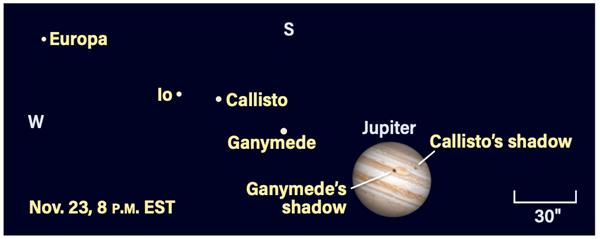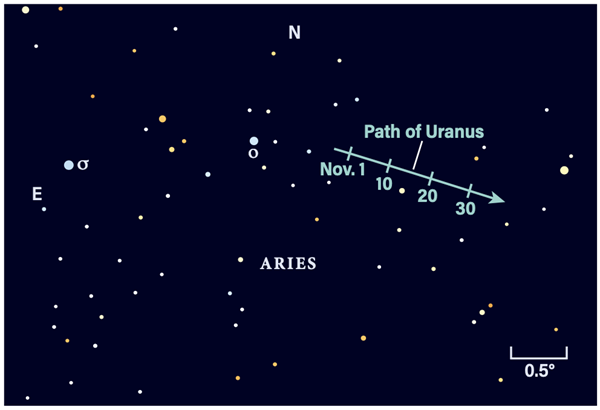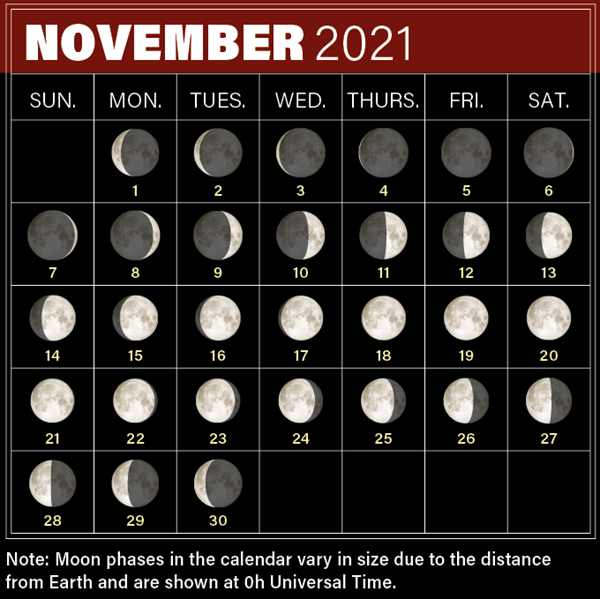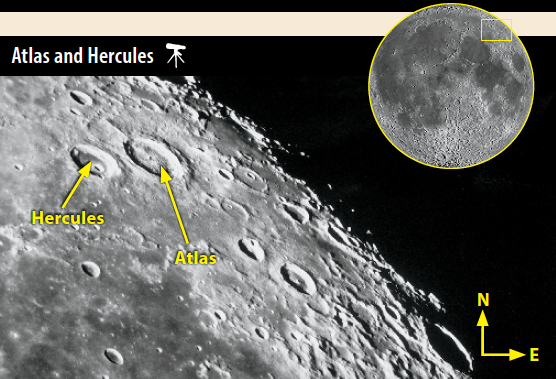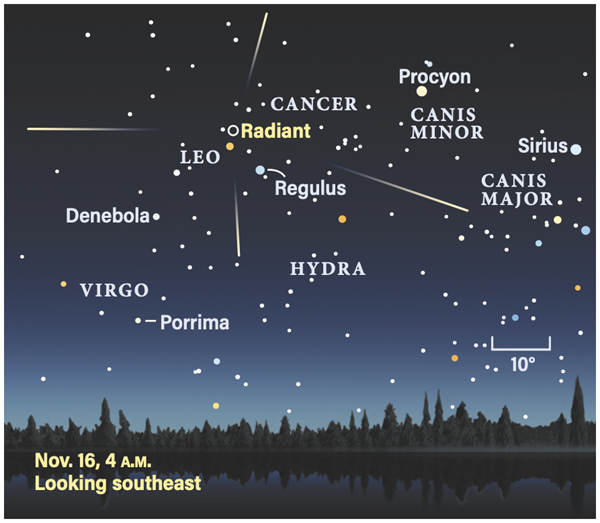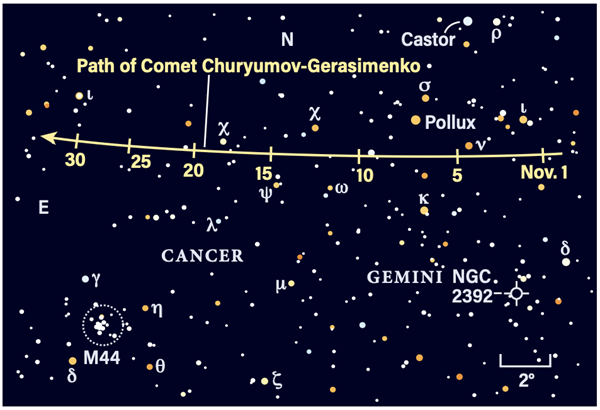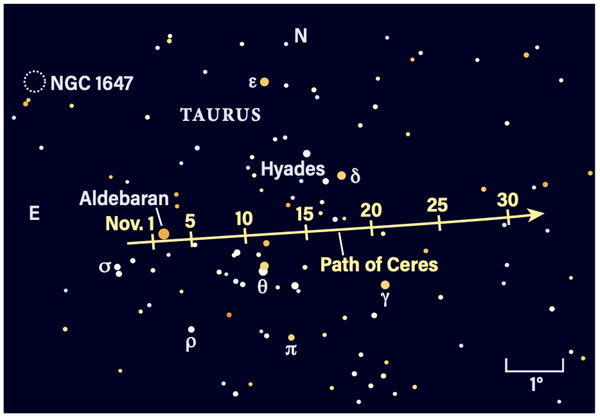Venus crosses into Sagittarius Nov. 1 and is visible within half an hour of sunset, low and bright in the southern sky. At magnitude –4.5, it is unmistakable. Venus crosses the broad swath of the Milky Way during the first two weeks of the month. The planet stands less than 3° south of the Lagoon Nebula (M8) on Nov. 6, offering astrophotographers a fine target. Take your time framing Venus and the Milky Way, along with foreground features silhouetted against the sky.
On Nov. 7, a slender crescent Moon stands roughly 3° west of Venus. Earthshine makes the unlit portion of the Moon visible against the Milky Way for those with a good view of the western horizon and clear, transparent air. View Venus through binoculars on Nov. 14 and look for the misty smudge 3° north — this is magnitude 5 globular cluster M22. Also check out Venus on Nov. 19, when it sits a half-Moon’s width from the 2nd-magnitude star Nunki (Sigma [σ] Sagittarii).
Through a telescope, Venus reveals a 48-percent-lit disk spanning 26″ on Nov. 1. Watch it change throughout November, slimming to a fine 29-percent-lit crescent by Nov. 30 and increasing to 39″ wide.
By the end of November, Venus, Saturn and Jupiter span a 35°-long stretch of the ecliptic across the southwestern sky. Saturn and Jupiter both lie in Capricornus the Sea Goat all month. Between Nov. 7 and 11, a waxing crescent Moon follows this line of planets.
We’ll visit Saturn next, which lies in the constellation’s western half and moves slowly eastward as the month progresses. Saturn is visible as twilight descends and sits farther along the ecliptic than Venus; consequently, it remains visible longer, setting soon after 11:30 P.M. local time on Nov. 1 and by 9 P.M. on Nov. 30. It starts November at magnitude 0.5 and dims by 0.1 magnitude by month’s end. A waxing crescent Moon lies in its vicinity Nov. 9 and 10.
The best telescopic views of Saturn occur within a few hours of sunset. By 10 P.M. local time Nov. 1, Saturn is less than 20° high, so our atmosphere distorts the view. Saturn’s disk spans 17″ and the rings’ major axis stretches 38″ wide. The increasing distance between Earth and Saturn this month reduces its size by a barely noticeable 5 percent during November. Saturn lies 10.4 astronomical units or 967 million miles from Earth by the end of the month.
The fine ring system is tilted by 19° to our line of sight, showing off their northern face while the southern hemisphere of the planet peeks out below the outer Ring A.
Titan, Saturn’s brightest moon, shines at magnitude 8.7 and is easily spotted through any telescope. You’ll find it north of the planet Nov. 6 and 22, and south of the planet Nov. 14 and 30.
Three fainter (magnitude 10) moons orbit closer in. Tethys, Dione, and Rhea swap positions quickly, sometimes noticeable in an hour or so. Enceladus is challenging to spot at magnitude 11.7, close to the bright rings.
Iapetus reaches inferior conjunction Nov. 18, when it appears closer to Saturn than usual. It lies within 1′ of the planet from Nov. 17 to 19. Iapetus moves west of Saturn in the latter half of the month, turning its brighter face earthward. See if you can spot this moon shining at about 11th magnitude midmonth, and slightly brighter toward the end of November.
Brilliant Jupiter shines at magnitude –2.5 in eastern Capricornus and remains about 16° east of Saturn all month. It moves slowly west; its motion relative to 3rd-magnitude Deneb Algedi will be obvious every few nights. It lies 1.9° northwest of the star on Nov. 1, passes due 1.6° north Nov. 22, and moves to a point 2.2° northeast of the star by Nov. 30.
The best views of Jupiter occur in late twilight, when it stands one-third of the way from the horizon to the zenith in the southwest. The fine cloud features, the twin dark equatorial belts, and the Great Red Spot are visible through small telescopes. The planet’s brisk rotation (just under 10 hours) shows features changing position within a single evening. Jupiter sets soon after midnight on Nov. 1 and by 11 P.M. local time on Nov. 30.
Its four Galilean moons wander with periods of 1.8 to 17 days. Each moon also undergoes occultation by Jupiter, is hidden by Jupiter’s shadow in an eclipse, and transits with its associated shadow across the disk. The narrow observing window reduces the number of observable mutual satellite events, but two this month are worthy of attention. Note that more events occur than are listed here.
On Nov. 19, find Io just off Jupiter’s eastern limb and Ganymede near the western limb. Io begins to transit the disk at 8:33 P.M. EST and is joined by its shadow at 9:53 P.M. EST. Ganymede approaches the western limb of the planet and disappears in an occultation at 10:35 P.M. EST, while Io and its shadow are still on the disk.
Nov. 23 sees a rare double shadow transit. Ganymede and Callisto project the largest shadows on the jovian cloud tops; to see both at once is special. East Coast observers will see Ganymede’s shadow appearing at 6:08 P.M. EST, followed soon after by Callisto’s shadow at 6:52 P.M. EST. The shadows remain on the disk throughout the early evening for most of the country, until Ganymede’s shadow exits by 9:39 P.M. EST, followed by Callisto’s shadow at 11:03 P.M. EST — after Jupiter sets in that time zone but visible across the rest of the country.
Neptune is located in Aquarius the Water-bearer, shining at magnitude 7.7. It remains visible until after midnight all month. Binoculars will show it standing just over 3° northeast of the 4th-magnitude star Phi (ϕ) Aquarii on Nov. 1. The gap between the star and planet shrinks by only 15′ during the month as Neptune approaches its stationary point, which occurs Dec. 1.
To find Phi Aquarii, note that it stands roughly 8° south of the Circlet in Pisces. You can also use a pair of 6th-magnitude stars east of Phi in same binocular field of view — Neptune forms an isosceles triangle with this pair.
By the end of the month, Neptune lies 2.8 billion miles from Earth and its disk spans 2″ through a telescope. Use high magnification on a steady night of seeing to observe its bluish-green disk. Neptune stands 5° northwest of a gibbous Moon Nov. 13.
Uranus reaches opposition Nov. 4 and remains visible all night. The ice giant lies about 18° southwest of the Pleiades in a sparse region of southern Aries. Shining at magnitude 5.7, Uranus starts the month 0.8° due west of Omicron (ο) Arietis, a star also at magnitude 5.7 and itself 5° due north of the 4th-magnitude star Mu (μ) Ceti. By Nov. 17, when Uranus stands 1.8° northwest of a near-Full Moon, the planet is 1.5° west of Omicron Arietis, which is 1.7° due north of the Moon. Uranus continues westward, ending the month 2° west of Omicron.
The best time to view Uranus through a telescope is when it’s highest in the sky around local midnight. The planet spans 4″ — tiny to be sure, but resolvable through many telescopes as a disk. Its distinctive greenish-blue hue is marvelous to observe from 1.75 billion miles away.
Mercury continues to hang low in the southeastern sky before sunrise. On Nov. 1, Spica stands 4.2° due south of Mercury but is two magnitudes fainter. Binoculars may show the star if twilight doesn’t drown it out. Mercury shines at magnitude –0.8 and brightens slowly but concurrently dips closer to the Sun.
A crescent Moon occults Mercury on Nov. 3 during daylight as seen from the eastern half of the U.S. and Canada. The southern limit line runs from Florida diagonally across the country to Wyoming and into Canada. It’s a difficult observation to make because of the Sun’s proximity (15° away), so utmost care and past experience of such events are paramount — don’t take lightly the risk of exposing your eyes to the Sun. Use a telescope that is well aligned and already calibrated for pointing so that accurate acquisition of the Moon and Mercury is possible. The time of the occultation will vary depending on your geographic location. For example, Mercury disappears at 1:38 P.M. CST in Kansas City, Missouri, and at 2:33 P.M. CST in Chicago.
Mercury is lost in bright twilight by the second week of November and heads toward its Nov. 28 conjunction with the Sun. It reappears in the evening sky in December.
Mars is too close to the Sun to observe during most of November. It has a conjunction with Mercury on Nov. 10, but the pair is low in the sky and at magnitude 1.6, the Red Planet is difficult to see just before sunrise. Mars returns to the morning sky by the end of the month.
Rising Moon: Standout mounts
A night after the Moon bulges past a perfect half, the Sun rises over the great lava fields of Mare Imbrium, brightly illuminating a series of mountain peaks jutting suddenly upward. In their own way, they are just as dramatic as the large oval Plato Crater to their north.
Mons Pico stands about a mile and a half high above its footprint of 15 miles by 10 miles. During the evening of the 13th, it is easy to notice Pico’s shadow retreating.
Faster yet are the long dark triangles cast by Montes Teneriffe to the west — have a peek every 20 minutes or so. Once thought to be volcanic, the new perspective brought on by the first robotic lunar missions finally let astronomers piece together the origin of these hills. But it was a completely different area to their west — Mare Orientale — that provided the answer we couldn’t see from Earth.
Multiple clean, concentric rings of mountains surrounding Orientale let scientists infer a similar impact origin for Pico. Long after the blast, multiple lava episodes filled the lowlands and buried the lower tops, leaving only the tallest peaks of the curving chains poking out. Piton is another high point to the southeast, while La Hire stands on the opposite side of Mare Imbrium.
Meteor Watch: Dodging the Full Moon
The annual Leonid meteor shower peaks Nov. 17 and is active between Nov. 6 and 30. This month’s Full Moon shortly after maximum strongly affects the shower’s visibility, so conditions are unfavorable around the peak. Focusing on the week prior to maximum is your best bet. On Nov. 12, the Moon sets at local midnight, just as Leo rises in the east. By Nov. 16, the Moon sets around 4 A.M. local time, offering more than an hour of dark skies before twilight interferes. This is likely your best morning to observe the Leonids.
The zenithal hourly rate of 10 meteors per hour this year means that even by the 16th, very few shower members will be observed, barring any surprises. The Leonid shower is associated with Comet 55P/Swift-Tuttle, which last reached perihelion in 1998.
Comet Search: In preparation
Next month’s Comet C/2021 A1 (Leonard) is set to thrill. To get the most out of it, first hone your skills on 67P/Churyumov-Gerasimenko.
Experienced observers see more detail than beginners because they’ve trained their brains to pick up subtle features. Similarly for imagers, whether you’re new or just rusty, you’ll make more mistakes without practice.
Looping in from Jupiter’s realm, Churyumov-Gerasimenko should glow between 8th and 9th magnitude. By midnight, it is more than 20° high in the east. Use the Crab Nebula (M1) as a brightness benchmark. Under country skies, a 4-inch scope will easily catch the Crab and the comet at low power. Both are a tough go from the city.
Training starts now: Bump up the magnification to 120x or so. Don’t worry that higher power makes the comet seem dimmer. Seeing large, faint objects is a specialty of our dark-adapted eyes; tap the scope gently to trigger their motion-detector circuits. The comet’s eastern flank (closest to the horizon and the Sun) will be well defined by the solar wind.
After the 10th, switch from evening to predawn observing to get seven more moonless sessions. Churyumov-Gerasimenko is then positioned very high in the sky. As November closes, brightening Leonard shares the same binocular field as globular star cluster M3 — can you tell which is which?
Locating Asteroids: Hiking the Hyades
A cluster-crossing bright asteroid, what luck! Dwarf planet 1 Ceres saunters across the face of Taurus — super simple to locate after midevening, when the Bull’s ruddy eye, Aldebaran, is 15° high in the eastern sky. Until the 4th, Ceres is brighter than any other star within 20′ of this luminary.
Glowing at magnitude 7.7, this ruler of main-belt asteroids might be tough through binoculars in an urban sky, but the smallest scope easily pulls it in. The Hyades passage is leisurely, making it unlikely that we’ll see Ceres move in one observing session. Print out a chart and place a dot on it each time you take your scope out. Avoid the nights of Nov. 18 to 20, when the Full Moon crosses nearby.
The Hyades is one of the closest star clusters to our solar system, 440 light-years in the distance — yet Ceres is barely 90 light-seconds out.

